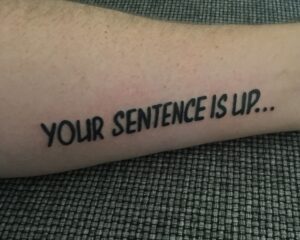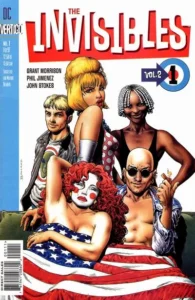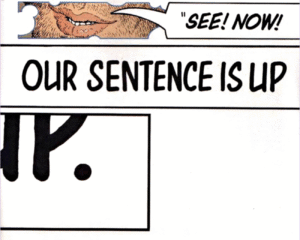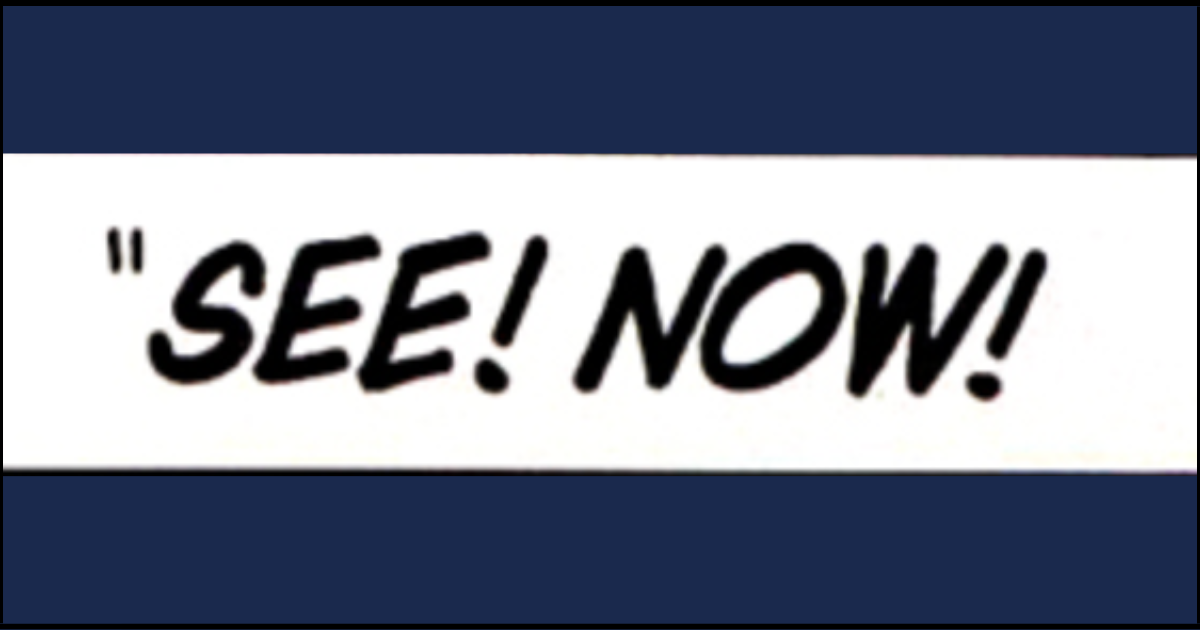A Tattoo with a Story
This one is a bit of a self-disclosure post.
You see, I have a tattoo on my left arm that says “Your sentence is up…”

Now a lot of people rightly assume it’s got to do with jail, law, courts etc.
But I have not ever been to jail, nor received any kind of judicial sentence.
This one is a little different, and it relates to narrative therapy.
Firstly, let’s talk about narrative therapy. What is it?
What is Narrative Therapy?
Narrative therapy is a collaborative and respectful approach that helps people re-author the stories they tell about their lives. It views problems as separate from the person and explores how dominant narratives, shaped by culture, family, and experience, can restrict identity and choice. By uncovering alternative stories based on values, strengths, and preferred outcomes, clients can move towards more empowering and meaningful ways of living.
Ok, so where does the tattoo come from? I am a massive comic book fan and the origins of this tattoo come from a series called The Invisibles, written by Grant Morrison.

It’s a classic good vs. evil story but instead of superheroes, villains, capes, and all that, it’s a little deeper touching on systems of control vs. freedom. There are mythological and philosophical themes all through out. In it, The ‘Invisible Army’ are tasked with bringing down the status quo and helping humanity reach the next stage of enlightenment before the end of the world. The character tasked with this is Jack, someone with the ability to see through these systems and help people become better. If you think this sounds an awful lot like The Matrix, you’re right. Reports on the set of the first Matrix say that copies of The Invisibles were shared with cast and crew and a lot of the elements were used as inspiration for the movie.
So What Does It All Mean?
The series ends with the impending end of the world. Jack, breaking the fourth wall turns to the reader and says “We made gods and jailers because we felt small and ashamed and alone… we let them try us, and judge us and, like sheep to slaughter, we allowed ourselves to be… sentenced. SEE! NOW! Our sentence is up.”

And here’s where it hit me. The story is about transformation. It uses the fantastical elements of the graphic novel to highlight the importance of freedom, revolution and connection. But Morrison does a wonderful job of taking the narrative and shifting the focus back to the reader, effectively making the reader the protagonist of a story that doesn’t really ever end. Morrison, by way of Jack is telling the reader that this wonderful exploration of external rebellion and challenging conformity and authoritarianism is actually now an internal story, the challenge that comes from within. That we are, in fact the creators of our own story. I think there’s a wonderful element of narrative structure and syntax that further highlights the point: the double meaning of sentence in this case is the actual structure of a sentence (the ending of the story) and the internal sentence (or sentences) we give ourselves.
Making It My Own
Being the budding therapist I am, I decided to take that on board and make it my own. So I tweaked the message somewhat and made it my own.
Your sentence is up…
The shift from our to your personalises the message. It’s there to remind me that I don’t have to follow the same patterns, stories, behaviours, approaches that I have before. The use of ellipses also creates a sense that the story isn’t over, that this sentence can lead into something new, something different, something better.
A Daily Reminder and a Therapeutic One
If we relate this to narrative therapy, this tattoo gives me a daily reminder that I am not restricted by the unhelpful stories I use to describe myself. That there are always opportunities for something different and that I don’t need to be so hard on myself.
Does it always work? No, I still find myself falling into old habits, which is why it’s on my arm so I have easy access to it to jump start this process again. But that’s how I explain things in therapy too. Whether I am doing individual therapy or couples therapy, what’s done in session is merely a chance to see what can be done, but the important work happens outside the room and we will need to remind ourselves of that constantly.
The Stories We Tell Ourselves (and Each Other)
This is where narrative therapy and Gottman’s work overlap; the stories we tell shape what we notice, how we react, and how hopeful we feel. I also remind couples that sometimes the stories we tell ourselves about our partner are not always helpful, but they, too, are not set in stone. This speaks to Gottman’s level in the Sound Relationship House around The Positive Perspective and how at any time, a couple can be in positive sentiment override or negative sentiment override. There’s an excellent article about the positive perspective in relationships here.
So what might be some of the stories you tell yourself that are not helpful? What about how you might describe your partner? Does it always have to be this way or is there an alternative? Is there another story out there that might be more beneficial to you and your relationship? Are you constantly judging yourself or your partner?
What if your sentence was up?
Wouldn’t that be interesting…
Please reach out if you would like to know more about Narrative Therapy, Gottman Therapy or counselling in general. You can contact me here







